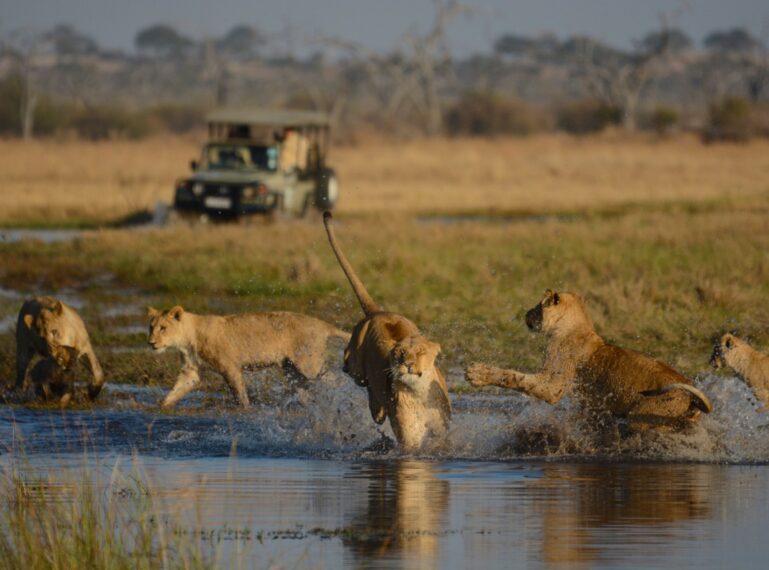
Botswana doesn’t follow the seasons the way most places do, it moves to its own rhythm, governed by water and wildlife. Whether you’re drawn to abundantly green and luscious landscapes of summer, the golden hues of autumn, or clear skies of the dry season as the quiet miracle of the flood’s arrival trickles into the Okavango Delta. Each chapter of the year reveals its own unique magic in this pristine, remote region in the wild.
Loleme, the tongue
A slow trickle, known as loleme, the tongue in Setswana, is the name given to the first trickle of water that creates the famed Okavango Delta. Slowly feeling it’s way forward, it traces an ancient path, said to taste the dry earth as it goes. What begins as a mere trickle soon becomes the mighty Okavango River in flood, spilling across the land to create a mosaic of luscious, lily-filled, papyrus-lined channels and mirrored floodplains. Teeming with wildlife, birds, fish, and people.
 Revered by locals, the arrival of the flood is a celebration. Locals run to meet loleme and walk, dance, and celebrate its arrival.
Revered by locals, the arrival of the flood is a celebration. Locals run to meet loleme and walk, dance, and celebrate its arrival.
The beginning of the flood is here.
With it comes the abundance of life that only water can bring.
In Africa, and especially in the Delta, water truly equals life.
This water travels one thousand two hundred kilometres to reach the delta, originating in the highlands of Angola. It is one of the most incredible natural journeys on earth. The Okavango delta ends not in an ocean but in a desert. Massive storms occur from November untilnMarch in the Angolan highlands and the rain collects into the Cubango and Cuito Rivers, merging to form the Okavango River. This river slowly snakes southeastward, across the Caprivi Strip in Namibia and into the Kalahari Basin of Botswana.
Ancient pathways carved through the desert sand
This ancient and slow journey brings the promise of flood, only reaching and creating the network of winding waterways months after the rain has fallen. While Botswana’s own rainy season ends in March, the Delta doesn’t begin to flood until May or June. The water moves at a snails pace (about 1 kilometer per day!) seeping into the Delta like the slithering tongue loleme, it is named after.
When reaching the delta, the water splits and spreads along ancient carved fault lines and in the plains and across sand and clay. It creates the myriad of winding waterways that becomes home to hippos, frogs, crocodiles and countless other forms of life. Instead of draining into the sea, the water is absorbed into the dry Kalahari desert earth and evaporates into the sky.
This flood reaches its peak in July or August, in the middle of Botswana’s dry season. While the rest of the region bakes, the Delta bursts with life.
By October, water levels drop. The land hardens. Channels dry. The Delta contracts, and the dry earth begins to crack once again. It waits for the distant rains in Angola to begin the cycle once more.
It is one of the very few inland deltas in the world and has been named a UNESCO World Heritage Site. It is home to one of the most pristine ecosystems left on Earth.
Botswana has a low-impact, high-value tourism model. They have a conservation and sustainability led approach which means fewer people but at a higher cost. This limits environmental impact and preserves a sense of deep wilderness.
It helps to keep wild places, well, wild.
Not only does it mean safaris are more intimate and you’re unlikely to cross paths with other people but wildlife flourishes in low-pressure habitats.
Visit our exquisite camps
Nestled between acacias and situated on the Boteti River, Boteti Tented Camp blends seamlessly into the wilderness surrounding it. Only a 45 minute drive from Maun, it is conveniently located yet still remarkably remote-feeling. Enjoy an intimate connection with the wild in a comfortable Meru-style tented camp. With only 5 Meru-style tents, sleeping 10 pax, it is an exclusive, boutique safari experience. Watch hippos, crocs, and countless bird species frolick while relaxing with a drink in hand on the deck. Take a dip in the pool during the heat of the day or enjoy one of the many safari activities that the camp offers. From afternoon mokoro boat ride through the papyrus lined channels or helicopter rides enjoying the mosaic from above. There’s a host of exciting things on offer.
Maun is a small bush town where you can fly directly into, enjoying an array of restaurants and shops. A great spot to begin and end a safari. It is also where the celebration of loleme can be witnessed as the first trickles of water begin to fill the delta.
Where luxury and the wild meet
Camp Savuti offers another authentic Botswana safari experience where luxury and wilderness meet. Camp Savuti is an eco-friendly camp situated on the wildlife-dense Savuti marsh. It is an area famous for its exceptional game viewing opportunities, in particular for lions that prey and hunt on elephants, which are found in abundance in the area.
Sleeping in luxurious canvas tents on stilts, enjoy wildlife as it saunters by right below your deck. Guests can enjoy a range of diverse activities from game drives through Chobe National Park and exploring the fringes of the dry marsh region. Guests can enjoy the swimming pool on afternoons between dawn and dusk game drives.
Camp Savuti is in a private game reserve bordering the Chobe National Reserve. The Savuti Airstrip is accessible by light aircraft. It’s a 40 minute flight from Maun and Kasane. General transfer times are 40 minutes from Maun, 40 minutes from Kasane and 20- 40 minutes from most other lodges in northern Botswana
Chobe Mopani Forest Lodge overlooks a thriving waterhole in the remote Kasane Forest Reserve, a relatively unexplored concession bordering the Zambezi National Park in the northern stretches of Botswana. The closest safari tourist town is Kasane, which has an airport open to both domestic and international flights.
Perfect for larger groups, it has 20 bedrooms that all face the water hole. There are also 2 luxury Meru style tents on raised platforms for guests seeking something special. every stay includes two activities per day, which guests can choose from either sundowner drives to the Kazuma Pan; a full day into the Chobe National Park for game drives and a boat cruise; cultural village tours; and day trips to Victoria Falls.
An astounding 40% of Botswana’s land is protected—national parks, game reserves, and wildlife management areas. Many lodges in the Delta are built using eco-conscious designs that leave Littleton no trace on the landscapes.
Green season – the time of rain, birth, and renewal
Botswana has its own rainy season from Nov- March which saw an abundance of rain this past year after a two year drought. Summer down South is known as green season as it turns dry savannahs into emerald paradise for animals. Usually coinciding nicely with the rutting and calving season. Most wild animals are incredibly attuned with nature and its cycles, syncing births with the seasonal rains, when food and water are most abundant. In drought years some grazing animals are known not to conceive at all. Thunderstorms pepper the afternoons and dramatic skies make for incredible photographic scenes.
Migratory birds flock to South and the sky is vibrant with over 500 birdspecies. Have you ever seen the vibrant coral of the carmine bee eater as they swoop down scooping up insects?
Why visit:
- Lush landscapes and dramatic thunderstorms
- Excellent birding and newborn animals
- Fewer guests and great photographic light
- Escape winter up North for Summer down South
Everything is golden – Autumn in the bush
The rain peters away. Landscapes open up and everything is simply golden. Golden hour seems to stretch as the autumn light drenches everything in its warm hues. Days are still warm while mornings and evenings begin to get crisp.The tongue of the floods begin to arrive up North.
Why visit:
- Comfortable weather
- Quiet beauty and shifting golden light
- The first trickles of flood in the Delta
- Not too busy
Floods have arrived/ Dry season
The delta begins to fill and meandering waterways filled with an abundance of life and game viewing. Watch elephants cleaning the mud from reeds as you float by in a traditional mokoro or taste the seeds of a waterlily. Dry weather means open, clear skies. Think storytelling beside a crackling campfire beneath star-filled skies.
Why visit:
- Peak wildlife viewing
- The season delta dreams are made of
- Mokoro and boat safaris at their best
- Crisp mornings, starry nights, crackling campfires
Hot, dry season
October is the hottest time of year in Botswana. The land holds its breath in anticipation for the next rainy season to begin. Trees are bare, grass is low and wildlife clusters around water sources so game viewing is spectacular.
Why visit:
- Superb game viewing
- Dramatic light makes it a photographer’s dream and high predator activity makes for exciting game drives
- Adventurous atmosphere
Ready for the adventure of a lifetime?
Contact our reservations team here to help curate the ultimate Botswana safari experience.
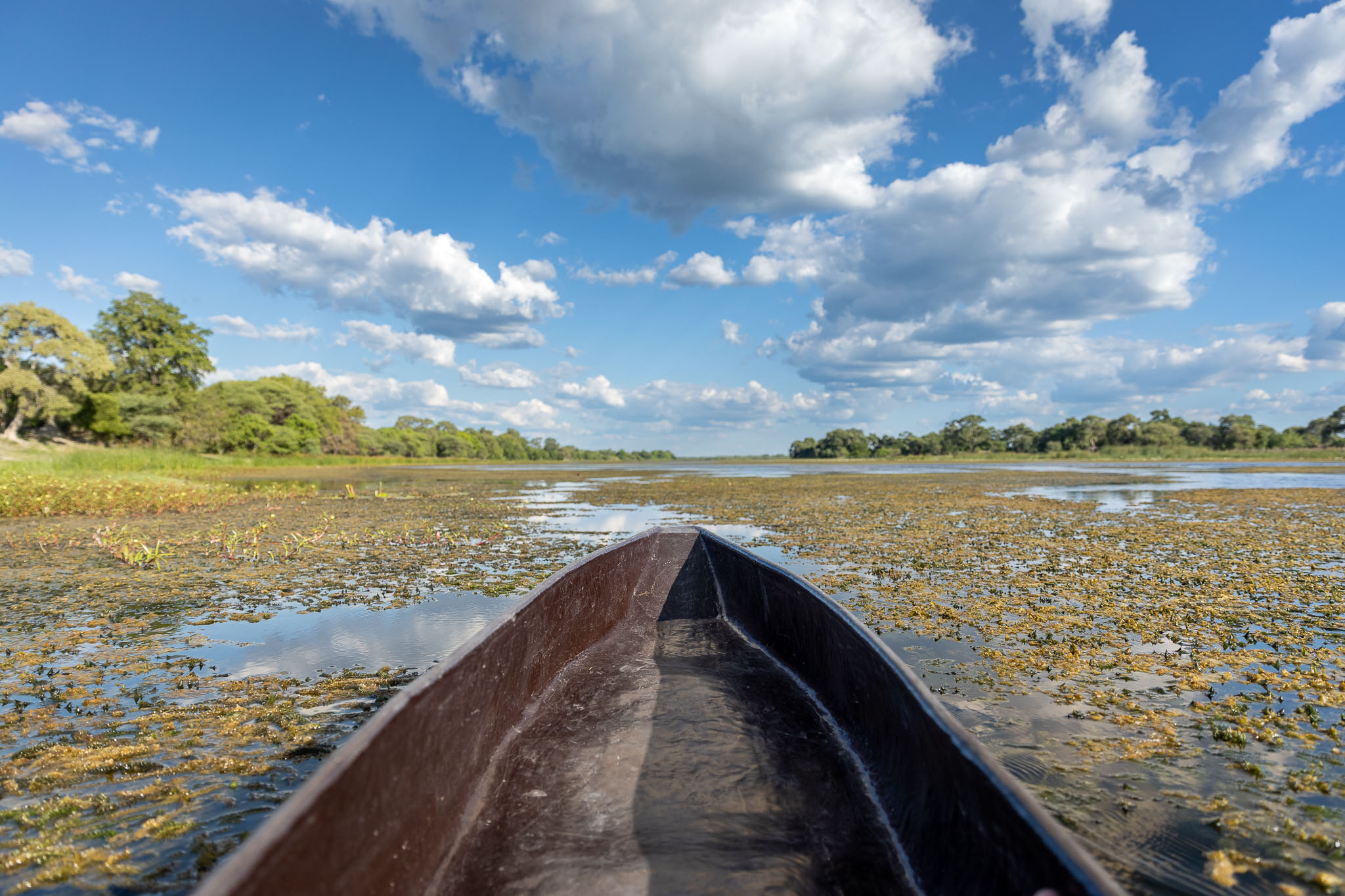

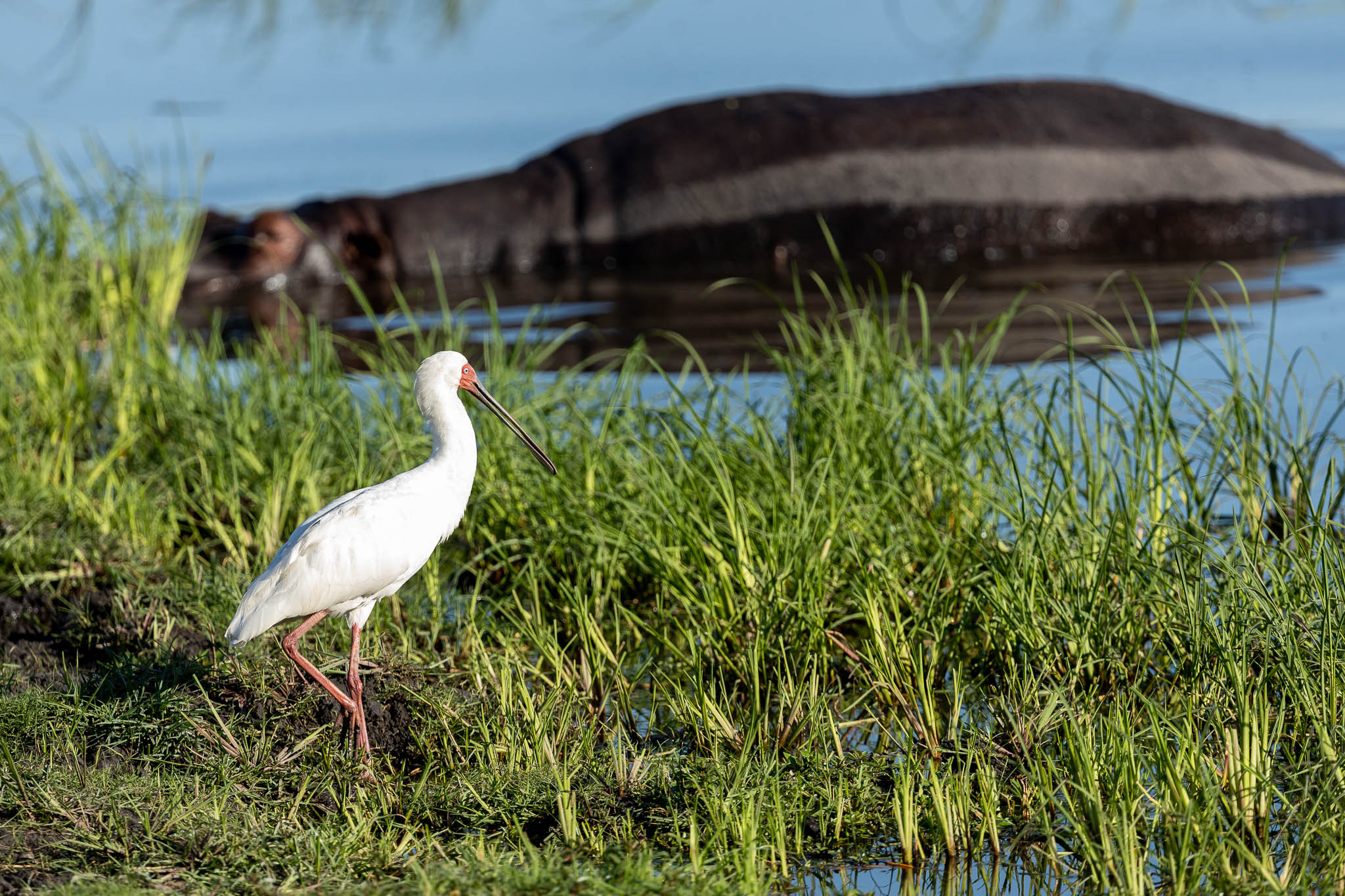
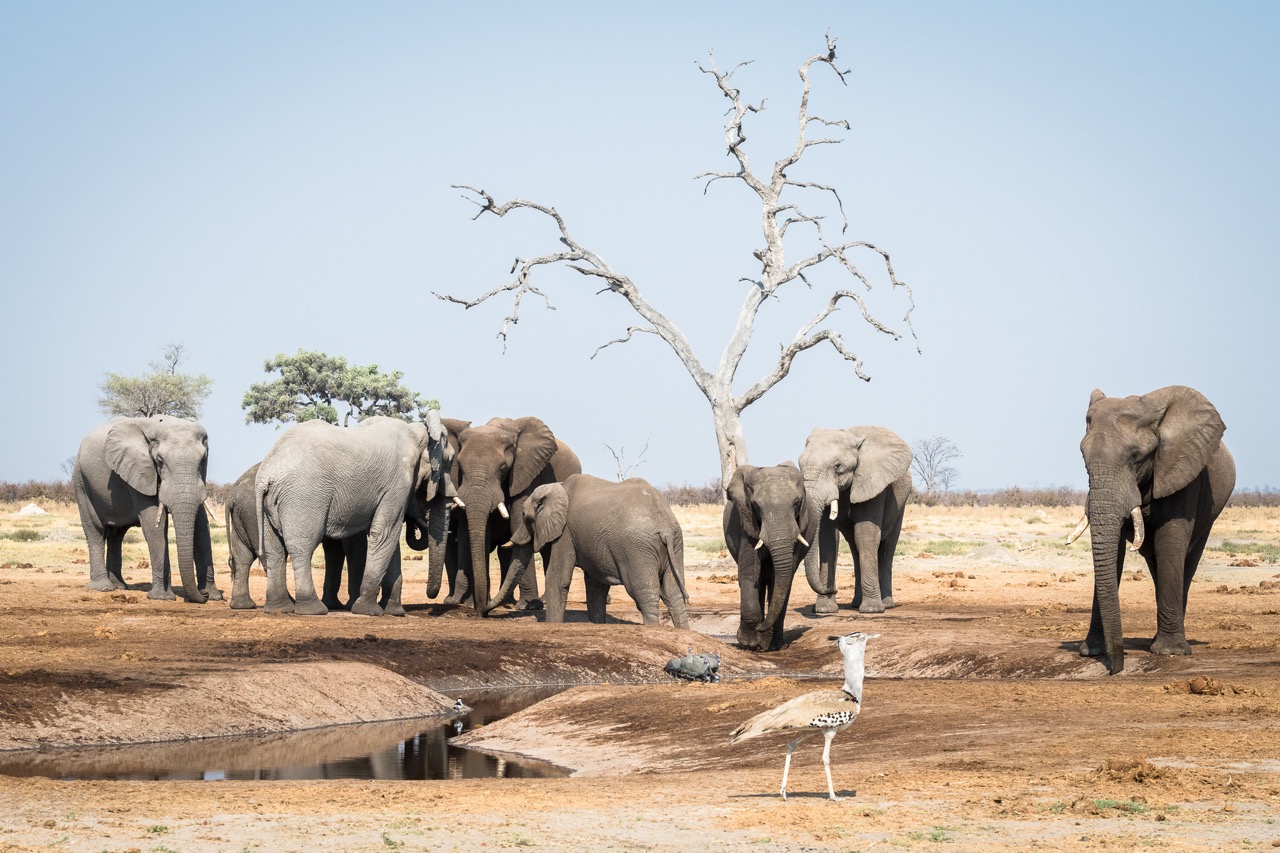

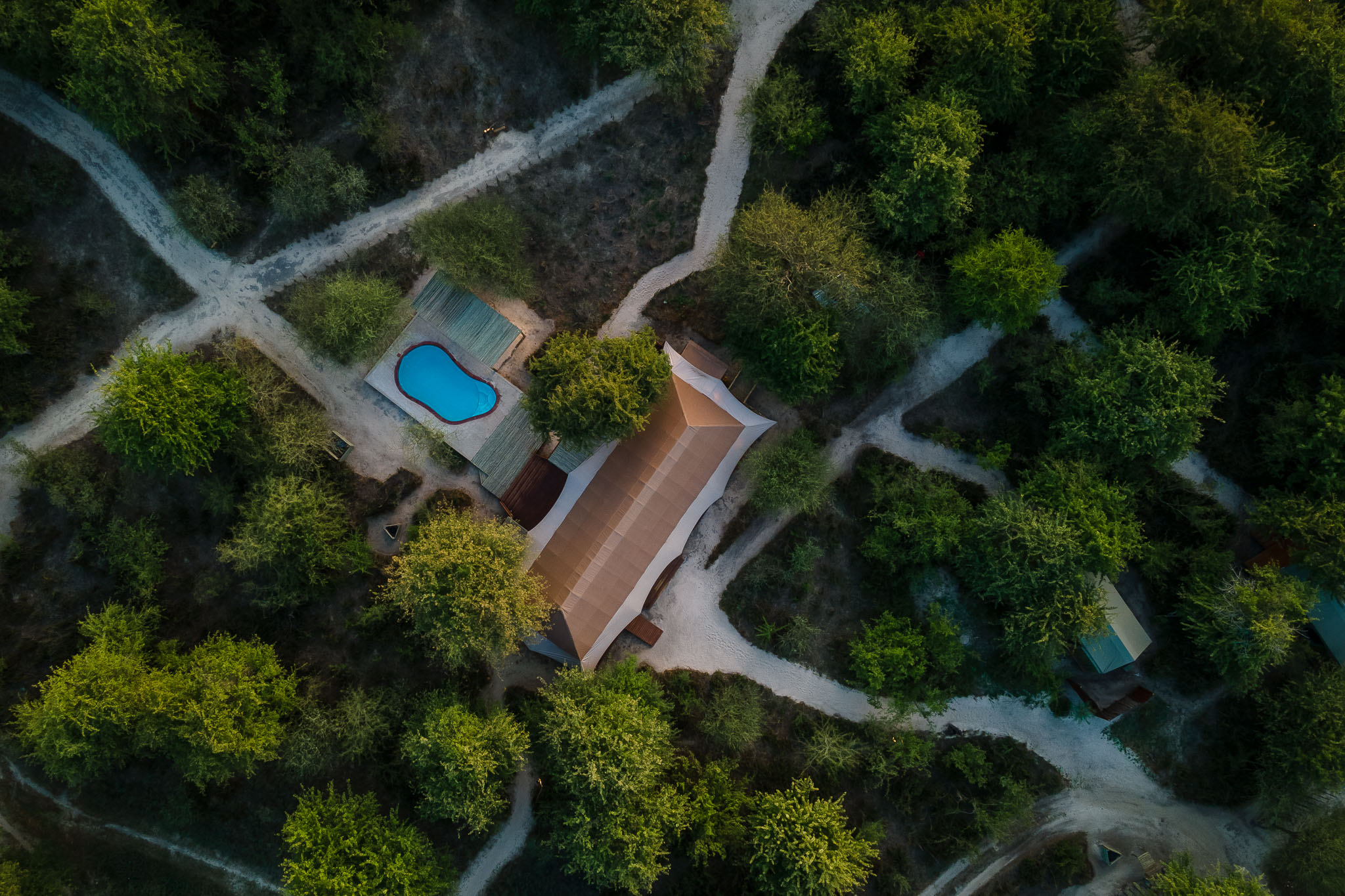
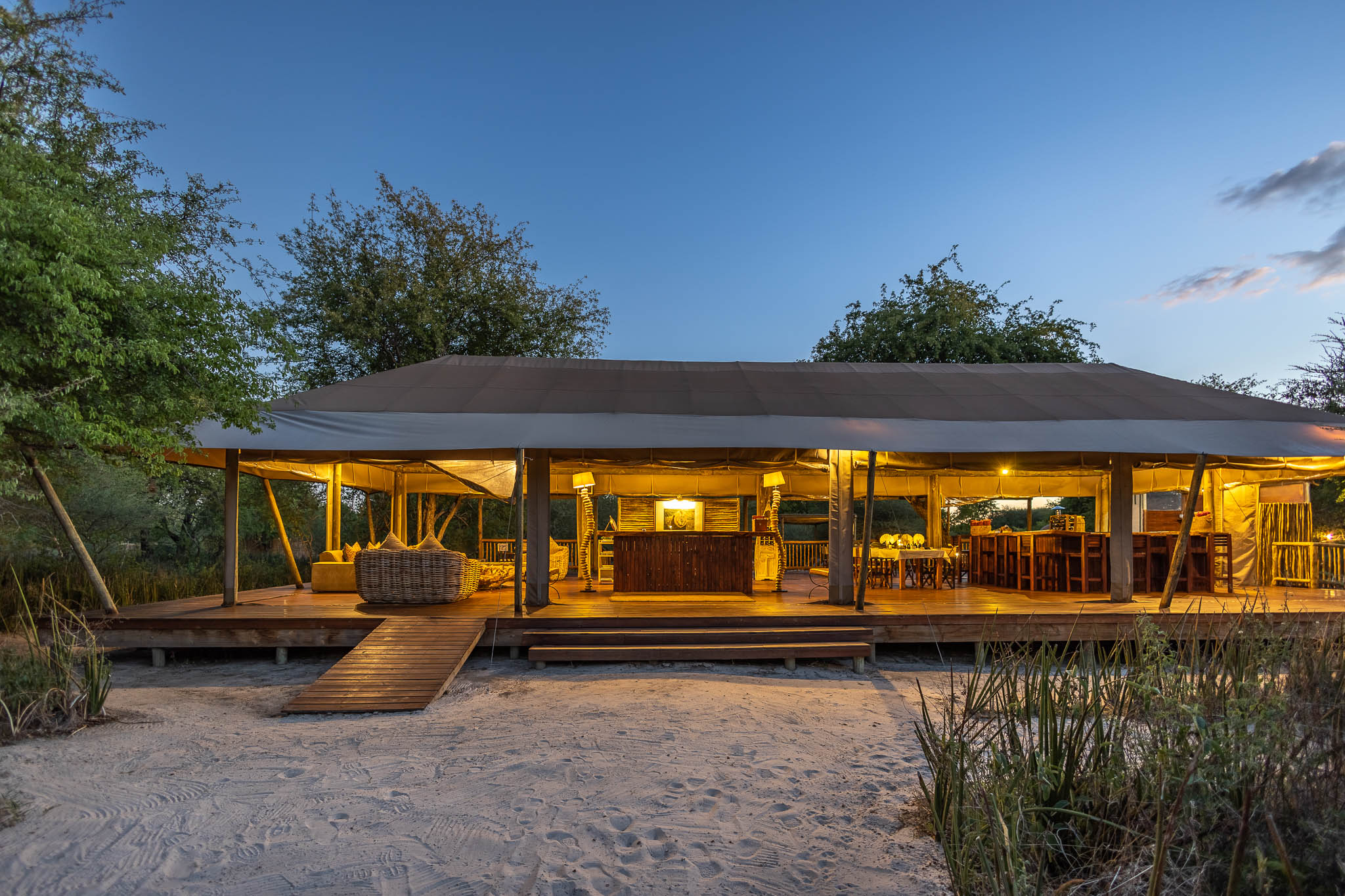
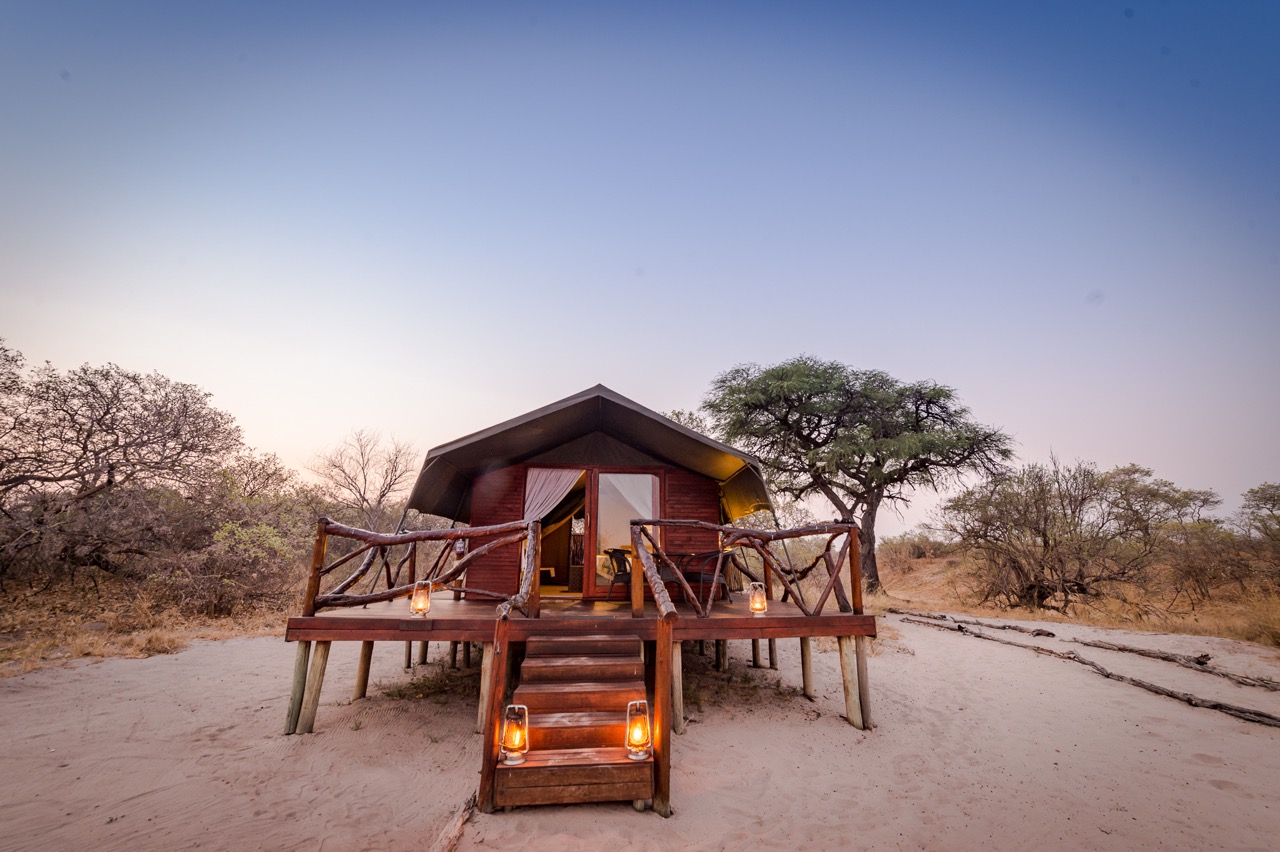
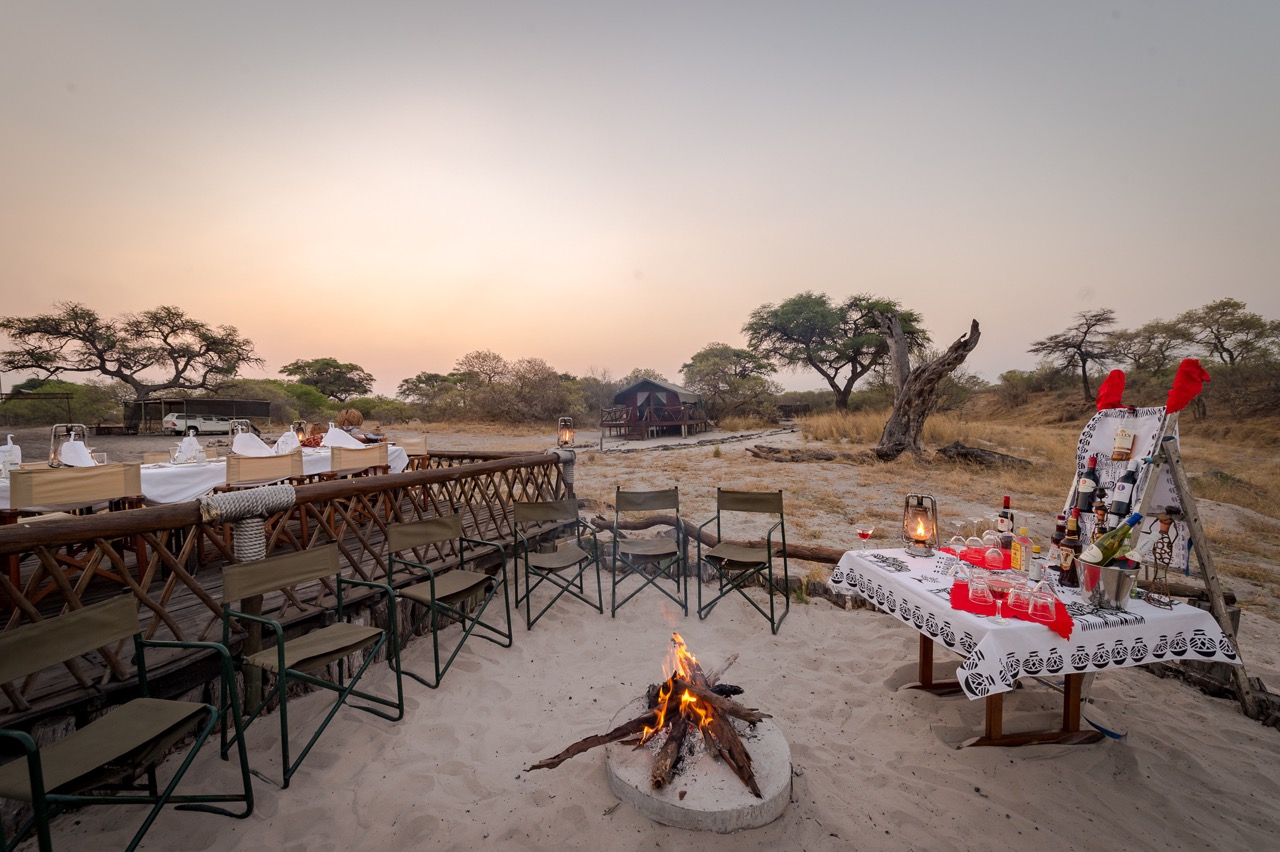
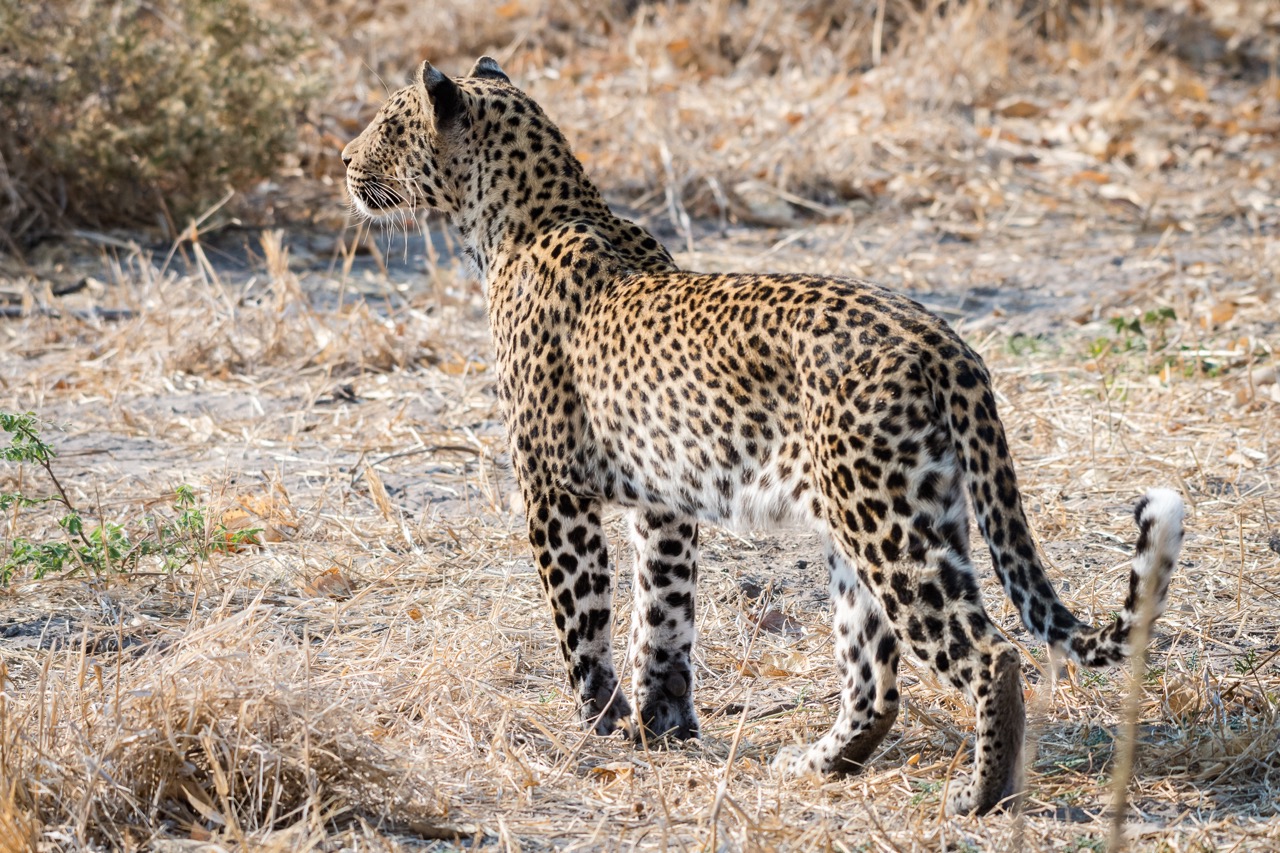
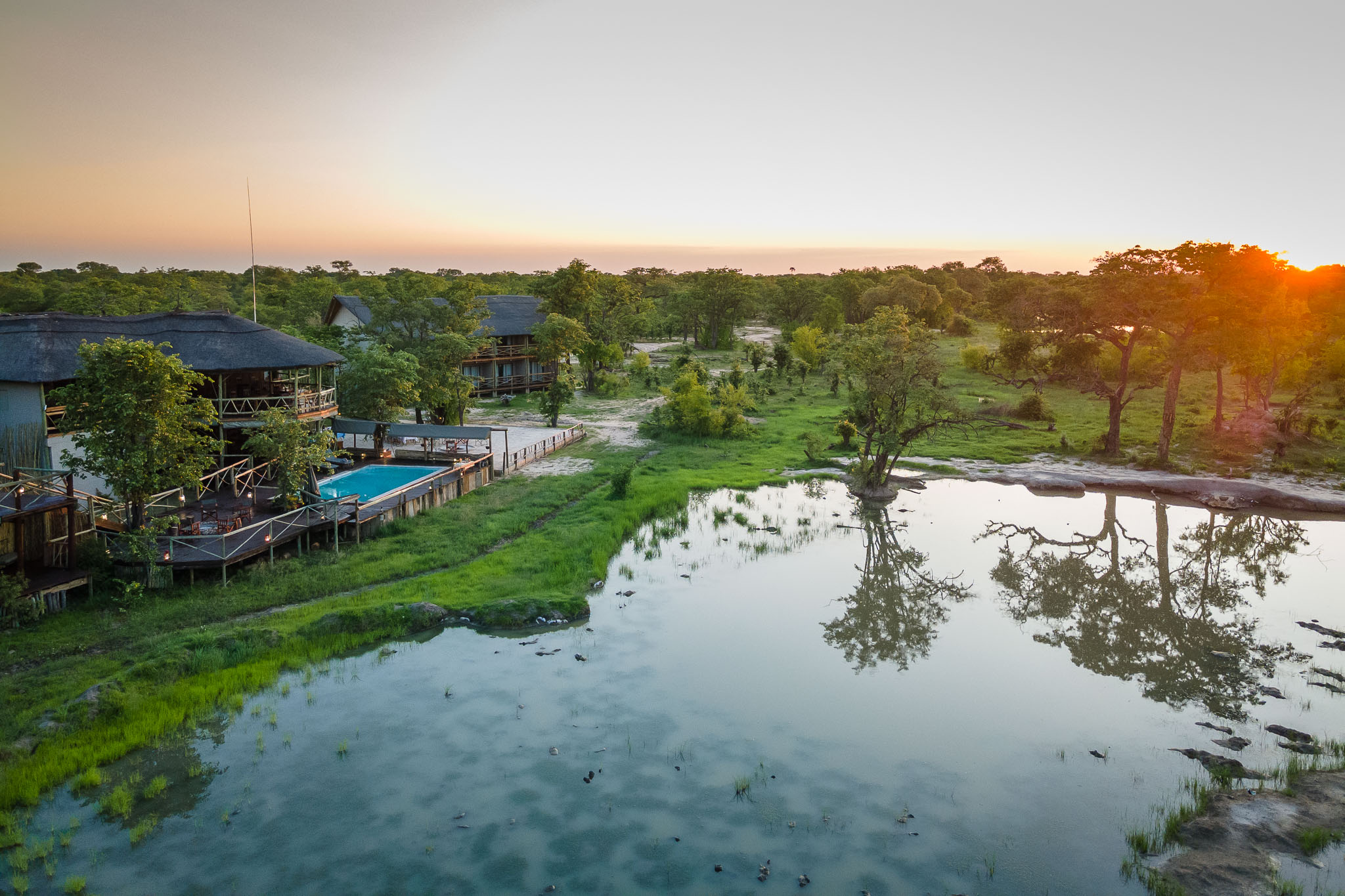
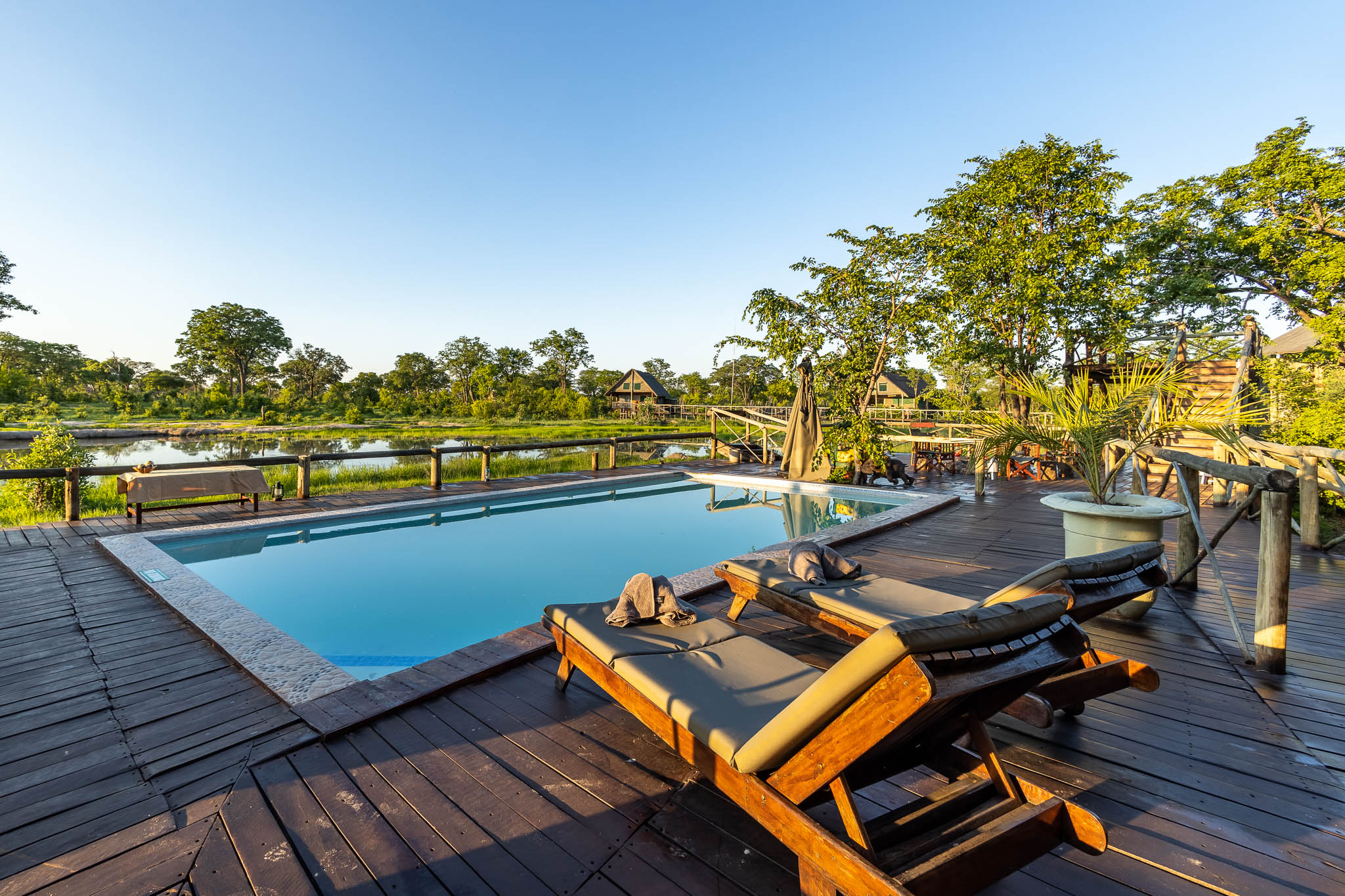
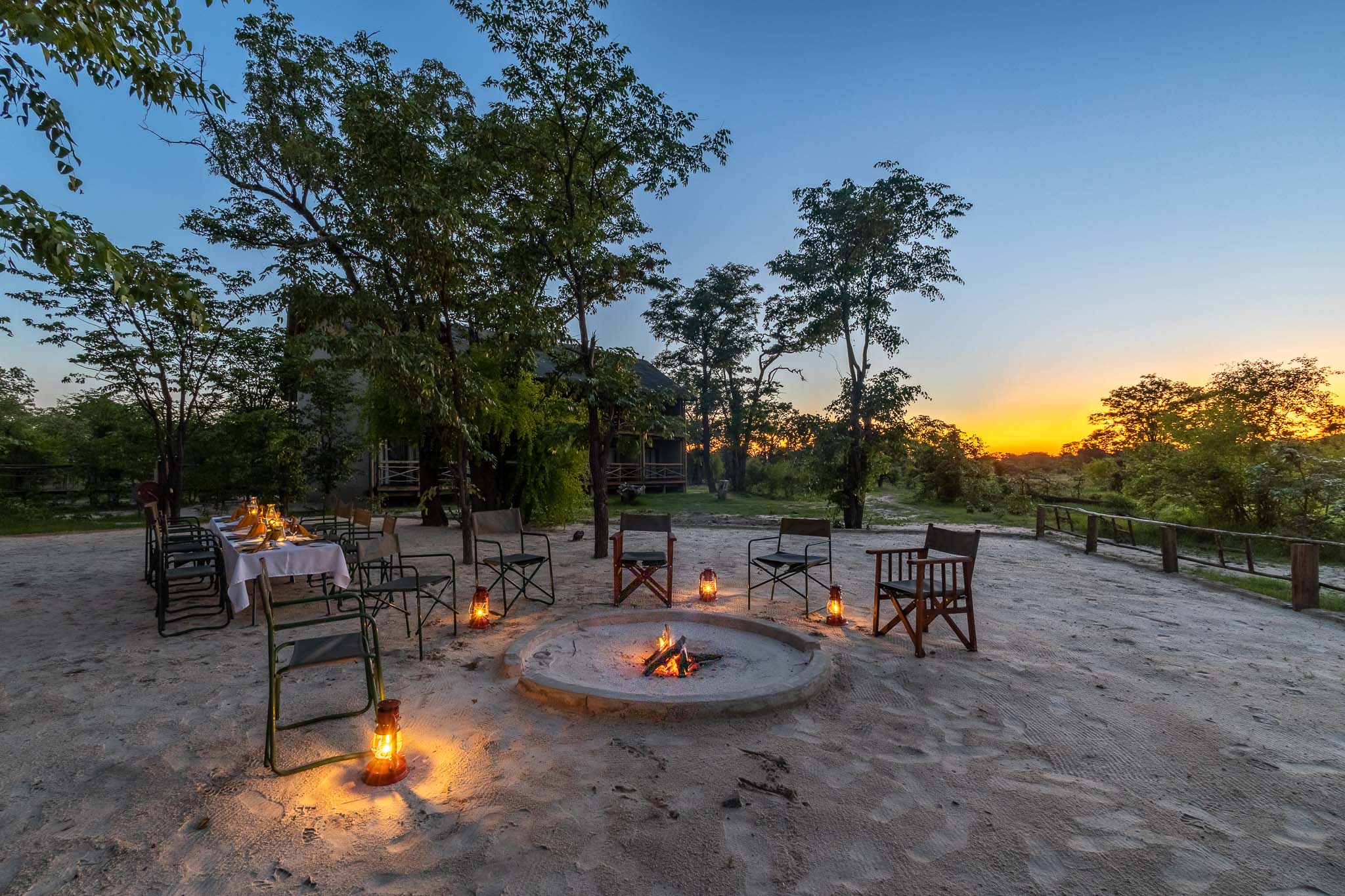
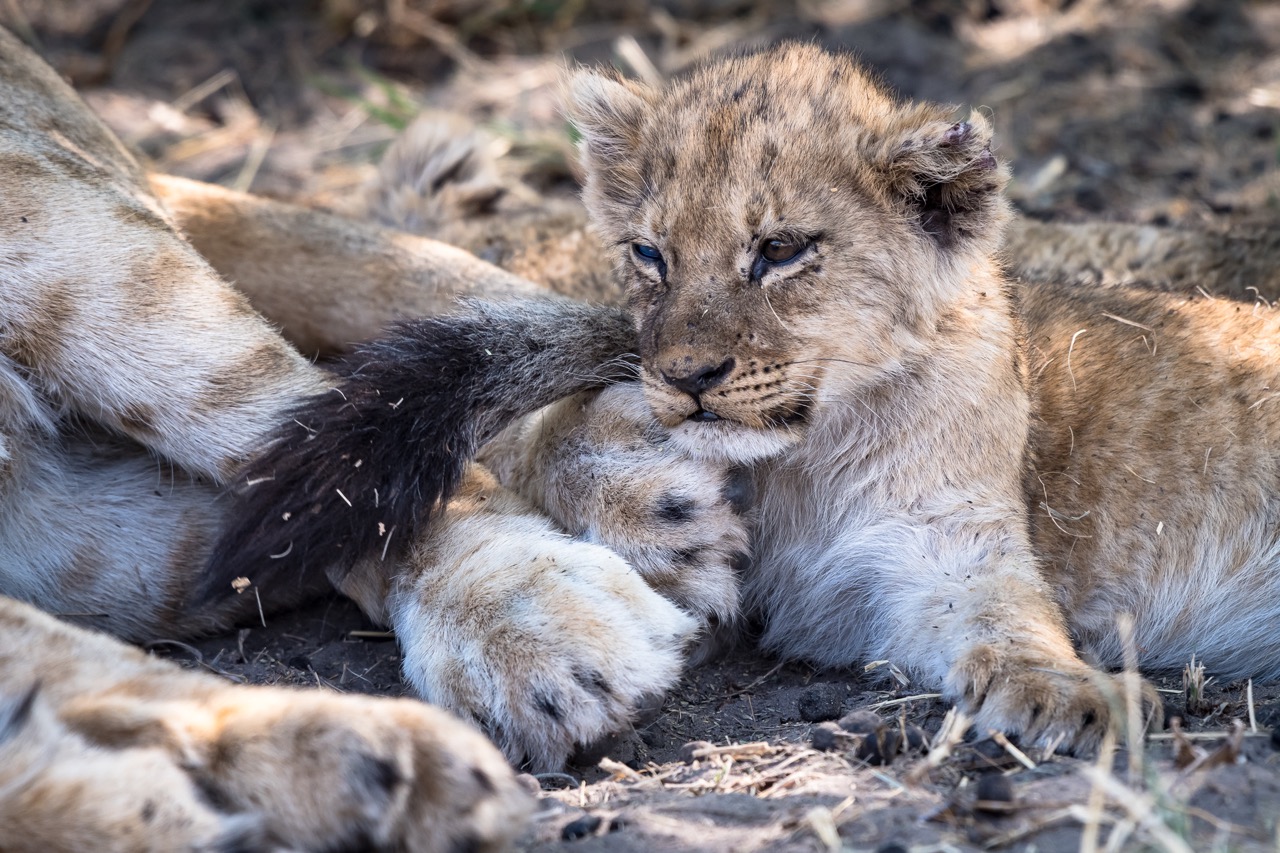
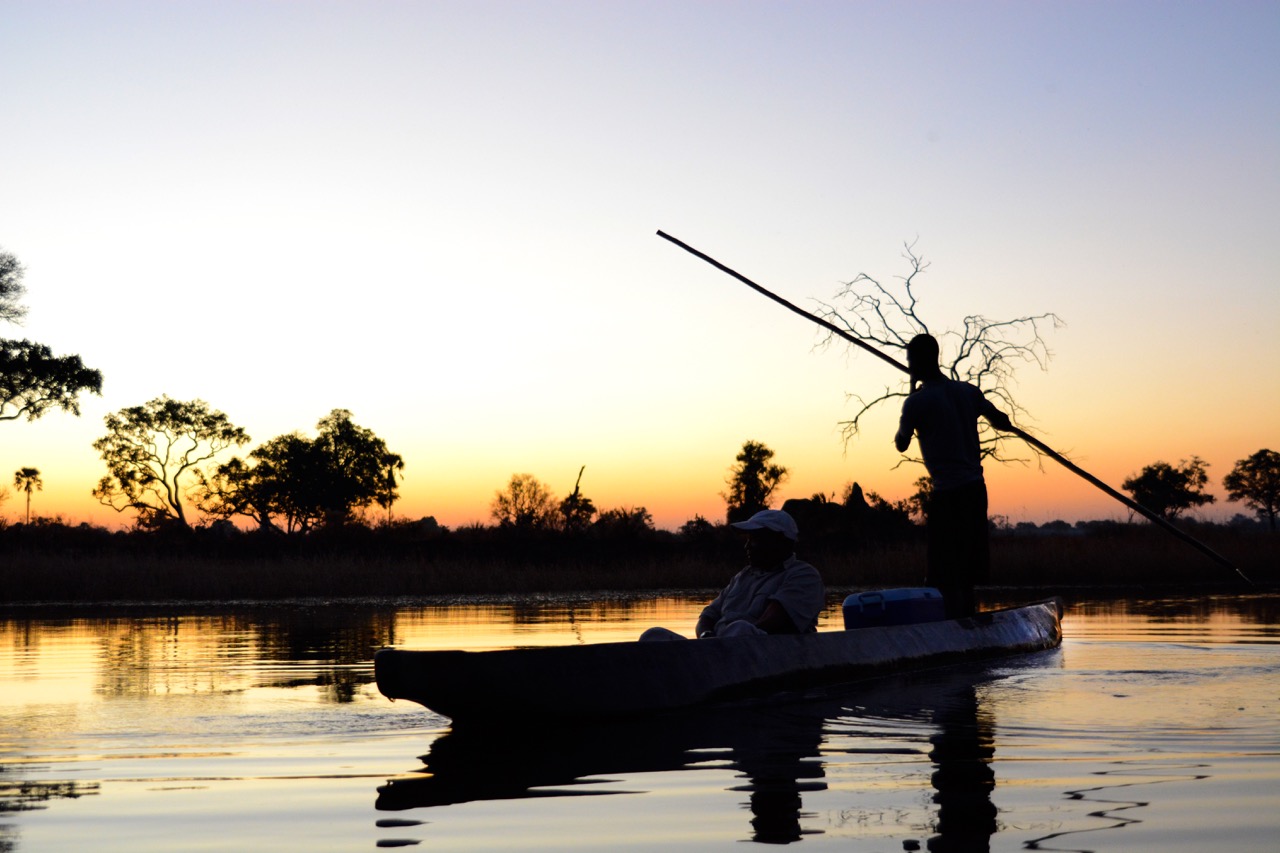
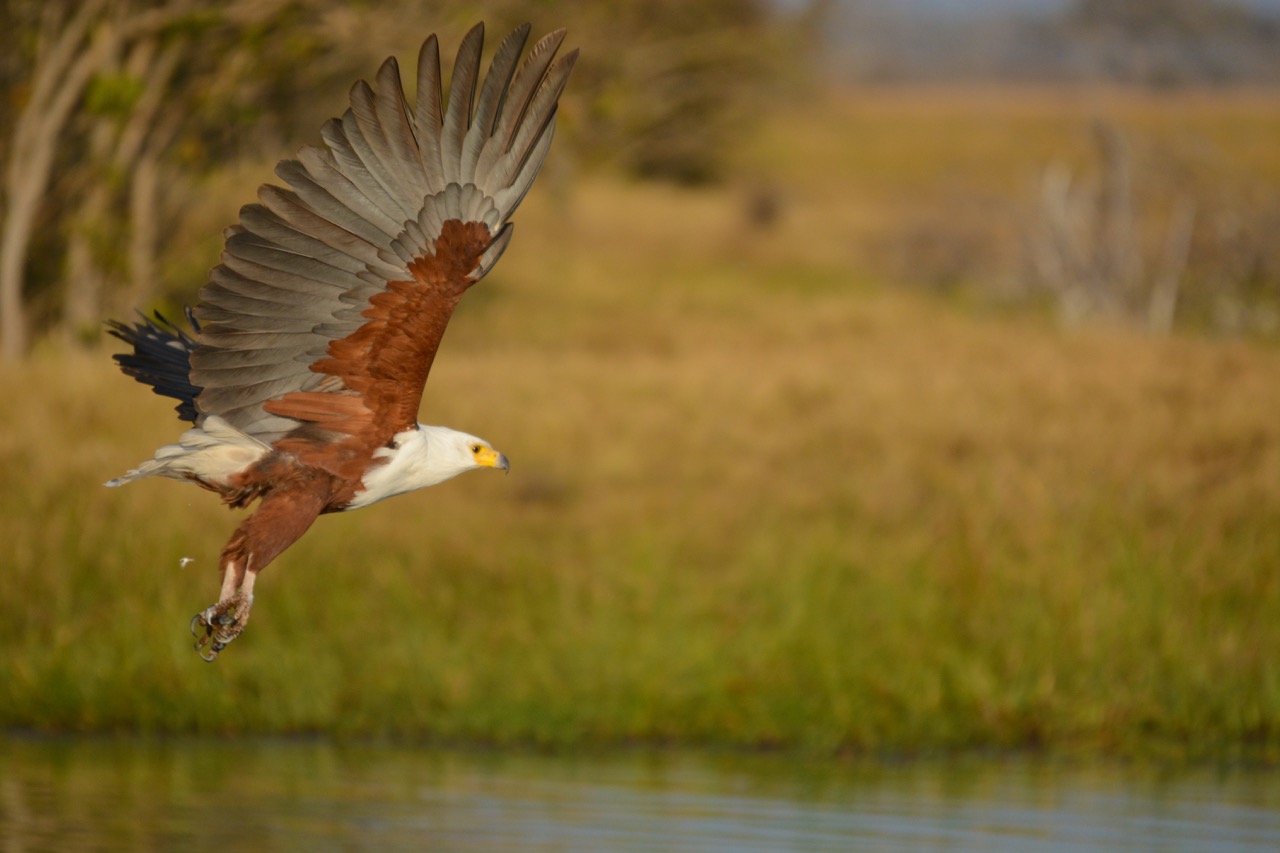
Leave a Comment